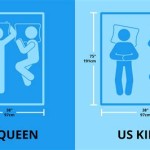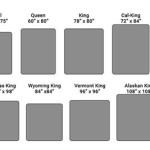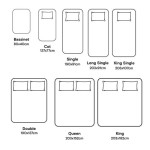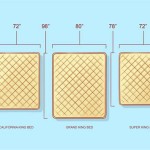Bed Bugs Actual Size Photo
Bed bugs are small, parasitic insects that feed on the blood of humans and animals. They are reddish-brown in color and have a flattened, oval-shaped body. Adult bed bugs are about the size of an apple seed, and they can grow to be up to 1/4 inch long. Nymphs (baby bed bugs) are smaller and lighter in color than adults.
Bed bugs are not known to transmit diseases, but their bites can be itchy and irritating. In some cases, bed bug bites can also lead to allergic reactions or secondary infections.
Bed bugs are typically active at night, and they feed on their hosts while they are sleeping. They usually bite exposed areas of skin, such as the face, neck, arms, and legs. Bed bug bites can be difficult to distinguish from other insect bites, but they are often arranged in a line or cluster.
Bed bugs can be a nuisance, but they are not typically considered to be a serious health threat. However, they can be difficult to eliminate, and they can quickly spread to other areas of a home or building.
Identifying Bed Bugs
The best way to identify bed bugs is by their appearance. Adult bed bugs are about the size of an apple seed, and they have a flattened, oval-shaped body. They are reddish-brown in color, and they have six legs and two antennae.
Nymphs (baby bed bugs) are smaller and lighter in color than adults. They have the same general shape as adults, but they do not have wings.
Bed bugs can be found in a variety of places, including:
- Mattresses and box springs
- Headboards and footboards
- Bed frames
- Nightstands and dressers
- Couches and chairs
- Curtains and drapes
- Carpets and rugs
- Wall cracks and crevices
Bed Bug Bites
Bed bug bites are typically small, red, and itchy. They can be arranged in a line or cluster, and they may appear on any exposed area of skin.
Bed bug bites can be difficult to distinguish from other insect bites, but there are a few key differences:
- Bed bug bites are often more painful and itchy than other insect bites.
- Bed bug bites may appear in a line or cluster.
- Bed bug bites may be accompanied by swelling and redness.
If you think you have been bitten by a bed bug, it is important to see a doctor to confirm the diagnosis. Your doctor may recommend treatment to relieve the itching and swelling.
Treating Bed Bugs
There are a variety of treatments available for bed bugs. The most common treatment is chemical insecticides. Insecticides can be applied to mattresses, box springs, and other areas where bed bugs are likely to hide.
Other treatments for bed bugs include:
- Heat treatment
- Cold treatment
- Vacuuming
- Steam cleaning
It is important to note that bed bugs can be difficult to eliminate. It may take multiple treatments to get rid of all of the bed bugs in your home or building.
Preventing Bed Bugs
There are a number of things you can do to prevent bed bugs from entering your home or building:
- Inspect used furniture and bedding before bringing it into your home.
- Vacuum your home regularly, especially in areas where bed bugs are likely to hide.
- Wash your bedding in hot water and dry it on high heat.
- Seal up cracks and crevices in your walls and floors.
- Be aware of the signs of bed bugs, and contact a pest control professional if you suspect you have an infestation.

View Bed Bug Pictures In All Life Stages Zappbug

What Is The Actual Size Of A Bed Bug Sos

View Bed Bug Pictures In All Life Stages Zappbug

Bed Bug Size Comparison Are Bugs Visible To The Eye

What Do Bed Bugs Look Like Pest Cemetery

Can You See Bedbugs Size Identification Removal Prevention

About Bed Bugs True Heat Solutions

Bed Bug Basics

Appearance And Life Cycle Of Bed Bugs Sereni D

What Do Bed Bugs Look Like Loadup








